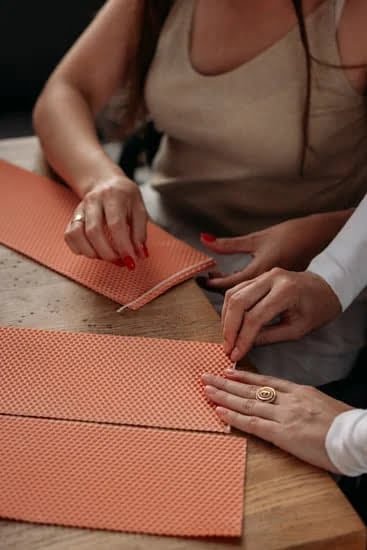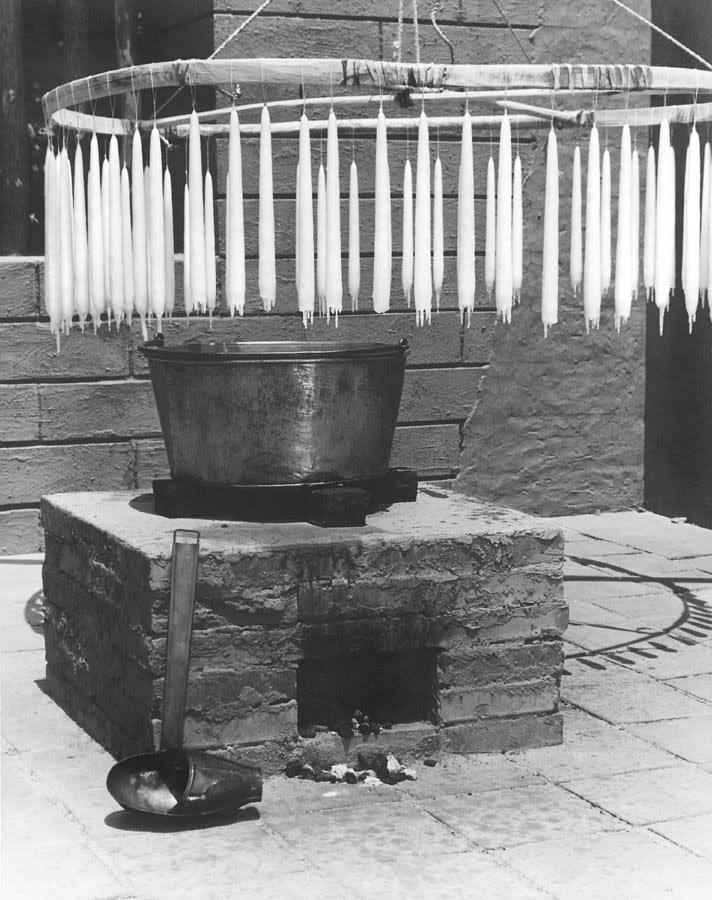When it comes to candle making, one of the most crucial decisions you’ll make is choosing the right material for your candle mold. The material you choose can greatly impact the final outcome of your candles, from their appearance to their burn time and overall quality. In this article, we’ll explore the best materials for making candle molds and discuss their advantages and disadvantages.
The importance of material selection cannot be overstated when it comes to candle making. Each type of material has its unique properties that can significantly affect how your candles turn out. From the ease of use and durability to the aesthetics and cost, there are several factors to consider when deciding on a material for your candle molds.
In this article, we will delve into some commonly used materials for candle molds, such as silicone, aluminum, polyurethane, glass, plastic, and rubber. We will examine the benefits and drawbacks of each material to help you make an informed decision based on your specific needs and preferences. Additionally, we will also explore unconventional materials like wood, clay, or metal that can be used for making unique candle molds.
With so many options available in terms of materials for candle making molds, it’s essential to carefully consider various factors such as cost, durability, ease of use, and aesthetics before making a choice. By understanding how different materials affect the final outcome of your candles, you can ensure that your candle making endeavors are successful.
In the following sections of this article series, we will delve deeper into each specific material type for candle molds. We will discuss their properties in more detail and provide insights into which might be the most suitable option for different types of candles. So let’s dive in and explore what makes each material unique when it comes to creating perfect candle molds.
Importance of Material Selection
When it comes to making candles, choosing the right material for your candle mold is crucial. The material you select will have a significant impact on the final outcome of your candle in terms of its appearance, durability, and ease of use. Understanding how different materials affect the process and end result can help you make an informed decision.
One popular option for candle molds is silicone. Silicone molds provide several benefits, including flexibility, easy removal of the candle once it has hardened, and the ability to create intricate designs. However, they are not without their drawbacks. Silicone molds can be more expensive than other materials, and they may require additional care to prevent damage or deformation.
Another commonly used material for candle molds is aluminum. Aluminum molds offer excellent heat conductivity, resulting in faster and more even cooling of the wax. This can contribute to a smoother finish on your candles. Additionally, aluminum molds are durable and long-lasting. However, aluminum can be prone to denting or warping over time with repeated use.
Polyurethane is another versatile material option for candle molds. Polyurethane molds are known for their durability and ability to withstand high temperatures. They can create detailed designs while providing flexibility for easy release of the finished candle. However, polyurethane molds might be more expensive compared to other options.
Glass molds offer a unique and elegant choice for making candles. They allow you to observe the melting process as well as any decorative elements within the wax during burning. Glass molds create a beautiful finished product but may require extra care when handling due to their fragility.
Plastic molds are affordable and practical options for candle making. They come in various shapes and sizes while being lightweight and easy to handle. Plastic is also known for its quick cooling properties, which enables faster production of multiple candles at once. However, plastic molds may not hold up well over extended periods of use.
Rubber molds provide flexibility and ease of use during demolding. They are highly durable and can withstand repeated use without losing their shape or texture. However, rubber molds may require the use of a release agent to prevent sticking.
Aside from these common materials, there are unconventional options such as wood, clay, or metal that can be used for making candle molds. These materials offer unique characteristics and may be suitable for specific candle-making purposes.
When selecting the best material for your candle mold, it is important to consider factors such as cost, durability, ease of use, and aesthetics. Each material has its own advantages and disadvantages, so weighing these factors against your personal preferences and desired outcome will help you make an informed decision. Ultimately, the best material for making a candle mold depends on your specific needs and preferences.
Silicone Candle Molds
Silicone candle molds have gained popularity in recent years due to their numerous benefits. These molds are made from a flexible and heat-resistant material, which makes them ideal for candle making. One of the biggest advantages of silicone molds is that they are non-stick, allowing for easy removal of the finished candles without any residue or damage. This makes them especially suitable for intricate or detailed candle designs.
Benefits of Using Silicone Candle Molds
One major benefit of silicone candle molds is their durability. Unlike other materials such as plastic or rubber, silicone molds are known for their long lifespan and resistance to wear and tear. This means that you can reuse them multiple times without worrying about them losing their shape or becoming damaged.
Another advantage of using silicone molds is their flexibility. The soft and pliable nature of silicone allows for easy demolding, even with complex shapes like figurines or textured patterns. This flexibility also facilitates easy release of any air bubbles that may form during the pouring process. Additionally, silicone molds provide consistent results since they do not expand or contract during the cooling process.
Drawbacks of Using Silicone Candle Molds
While there are many benefits to using silicone molds, it’s important to consider some drawbacks as well. One disadvantage is that silicone molds can be quite expensive compared to other materials such as plastic or aluminum. However, considering their reusability and longevity, this initial investment can be worth it in the long run.
Another drawback is that silicone molds tend to be less heat conductive than other materials such as aluminum or metal. This means that candles poured into silicone molds may take longer to fully cool and solidify. It’s important to take this into account when planning your candle making process and allow sufficient time for cooling before attempting to remove the candle from the mold.
Aluminum Candle Molds
When it comes to choosing the best material for making candle molds, aluminum is a popular choice among many candle makers. Its unique properties make it well-suited for certain types of candles and offer several advantages. However, it is important to also consider the drawbacks before deciding if aluminum molds are the right choice for your candle-making needs.
One of the main advantages of using aluminum candle molds is their excellent heat conductivity. Aluminum heats up quickly and evenly, allowing the wax to melt uniformly and reducing the risk of uneven burning or pooling in the finished candle. This makes it particularly suitable for producing pillar or taper candles that require a smooth exterior surface and a consistent burn throughout.
Furthermore, aluminum molds are known for their durability. They can withstand high temperatures without warping or distorting, which means they can be used repeatedly without losing their shape. Additionally, aluminum is resistant to corrosion, ensuring that your molds will last for a long time with proper care and maintenance.
On the other hand, there are some drawbacks to consider when using aluminum molds. First and foremost, aluminum has poor release properties compared to other materials like silicone or polyurethane. This means that removing the finished candle from an aluminum mold can be more challenging and may require additional steps such as freezing or applying mold release agents.
Another factor to consider is cost. Aluminum molds tend to be more expensive compared to materials like plastic or silicone. While they offer durability and performance benefits, this higher cost may not be feasible for all candle makers, especially those on a tight budget.
Polyurethane Candle Molds
Polyurethane candle molds are becoming increasingly popular among candle makers for their versatility and durability. Made from a type of synthetic resin, polyurethane molds offer several advantages that make them an excellent choice for creating candles in various shapes and sizes.
One of the main benefits of using polyurethane candle molds is their versatility. These molds can be easily customized to create intricate designs and unique shapes that may be difficult to achieve with other materials. The flexibility of polyurethane allows for intricate detailing, making it a great choice for producing highly decorative candles.
In addition to their versatility, polyurethane molds are also highly durable. They have excellent heat resistance properties, which means they can withstand high temperatures without warping or melting. This makes them suitable for both regular candle making as well as for more specialized techniques such as hot process or melt-and-pour methods.
Another advantage of polyurethane molds is their longevity. With proper care and maintenance, these molds can last for a long time, allowing candle makers to produce candles consistently over an extended period. Unlike some other materials that may wear out or become brittle over time, polyurethane remains resilient and continues to deliver high-quality results.
| Advantages | Disadvantages |
|---|---|
| Versatility in creating intricate designs | Relatively higher cost compared to other materials |
| Durability and heat resistance | Possible chemical odor during initial use |
| Longevity with proper care | Requires careful handling and storage to avoid damage |
Glass Candle Molds
When it comes to candle making, glass molds offer a unique and elegant option for creating beautiful candles. Glass molds are known for their versatility and ability to create stunning designs that can enhance the overall aesthetic of your candles. In this section, we will explore the benefits and considerations of using glass molds for candle making.
One of the main advantages of using glass molds is their transparency, which allows you to see the wax as it melts and provides an opportunity to experiment with various color combinations. This feature gives you greater control over the visual appeal of your candles, allowing you to create multi-colored or layered designs that are visually striking.
Additionally, glass molds can be shaped into intricate patterns or unique shapes that cannot be achieved with other materials, adding a touch of sophistication and elegance to your candle creations.
Another benefit of using glass molds is their heat resistance. Glass is capable of withstanding high temperatures without warping or distorting its shape, ensuring that your candle retains its intended design during the melting process. This durability makes glass molds a good investment as they can be reused multiple times without compromising their structural integrity.
However, it is important to note that there are some considerations when using glass molds for candle making. Glass molds tend to have a longer cooling time compared to other materials such as silicone or aluminum.
This means that patience is required as you wait for the candle to completely solidify before removing it from the mold. Furthermore, due to their fragility, glass molds need to be handled with care during both the pouring and removal process to avoid any cracks or breakages.
Plastic Candle Molds
Plastic Candle Molds: Exploring the Affordability and Practicality of Plastic Molds for Candle Making
Plastic candle molds are a popular choice among candle makers due to their affordability and practicality. These molds are typically made from high-density polyethylene (HDPE) or polypropylene (PP), which are both durable and heat-resistant materials. In this section, we will delve into the benefits and drawbacks of using plastic molds for candle making.
Advantages of Plastic Candle Molds
One of the main advantages of plastic candle molds is their affordability. Compared to other materials like silicone or glass, plastic molds are relatively inexpensive, making them an ideal option for beginners or those who are on a tight budget. Additionally, plastic molds are widely available in various shapes and sizes, allowing candle makers to easily find the perfect mold for their desired design.
Another advantage of plastic candle molds is their practicality. These molds are lightweight and easy to handle, making the pouring process more convenient. Additionally, plastic molds often have a smooth surface, which allows for easy release of the finished candles without any sticking or residue left behind. This ease of use makes them a great choice for those who want to create candles effortlessly.
Drawbacks of Plastic Candle Molds
While plastic candle molds offer many advantages, they do have some drawbacks that should be considered. One drawback is that certain types of plastic may not withstand high temperatures as well as other materials like silicone or aluminum. This means that if you prefer to work with wax that requires higher pouring temperatures, such as soy wax or beeswax, you may need to be cautious when using plastic molds.
Additionally, although most plastic molds have a smooth surface, it is possible to experience some imperfections in the final product due to the material’s flexibility. The flexible nature of plastic can sometimes lead to slight warping or distortion in the shape of the candle. However, these imperfections can often be minimized by properly preparing and caring for the mold before and after each use.
Rubber Candle Molds
Benefits of Rubber Candle Molds
One popular material for making candle molds is rubber. Rubber molds offer a range of benefits that make them a favorite among many candle makers. One key advantage is their flexibility. Rubber molds are highly flexible, allowing for easy demolding of the candle once it has set. This flexibility means that even intricate or detailed candle designs can be easily released from the mold without any damage or distortion.
Another benefit of using rubber molds is their durability. Rubber is a resilient material that can withstand repeated use without losing its shape or structure. This makes rubber molds ideal for those who plan to produce a large number of candles or want to reuse their molds multiple times. With proper care and maintenance, rubber molds can last for a long time, providing excellent value for money.
Ease of Use with Rubber Molds
Rubber candle molds are also known for being user-friendly and easy to use, even for beginners. The flexibility of the rubber allows for easy pouring and removal of the wax from the mold. It also helps in achieving smooth and even candles because it eliminates any air bubbles that may form during the pouring process.
Additionally, the soft and pliable nature of rubber molds makes them forgiving when mistakes happen during casting. If any imperfections or air pockets occur in the candle during pouring, they can easily be corrected by simply manipulating the mold slightly before setting.
Considerations with Rubber Candle Molds
While rubber molds offer many advantages, there are certain considerations to keep in mind when using them for candle making. One potential drawback is that over time, rubber may absorb some fragrance oils or dyes from the wax, which could affect future batches if different scents or colors are desired.
Another factor to consider is that intricately designed candles with small details may not work well with rubber molds due to their flexibility. These types of molds are better suited for simpler shapes and designs.
Other Materials for Candle Molds
While silicone, aluminum, polyurethane, glass, plastic, and rubber are the most common materials used for making candle molds, there are also a variety of unconventional materials that can be used. These alternative materials offer unique characteristics and can add a touch of creativity and originality to your candle-making process. Let’s explore some of these unconventional materials:
- Wood: Wood is a popular choice for DIY enthusiasts who prefer a rustic or natural look for their candles. Wooden molds can add warmth and charm to a candle design. However, it’s important to choose a wood that is heat resistant and won’t warp or release any harmful chemicals when in contact with hot wax.
- Clay: Clay molds provide endless possibilities for creating intricate and detailed designs. They can be molded into various shapes and sizes, allowing you to experiment with different artistic concepts. Additionally, clay molds have excellent heat retention properties which help create smooth and even burn lines in your candles.
- Metal: Metal molds offer durability and longevity compared to other materials. They are especially suitable for large-scale production as they can withstand high temperatures without warping or breaking down over time. However, it’s important to note that metal molds require proper insulation or lining to prevent the wax from cooling too quickly and creating uneven surfaces.
By exploring these alternative materials like wood, clay, or metal for your candle molds, you open doors to countless possibilities in terms of design and aesthetics. However, when choosing an unconventional material for your mold, it’s crucial to consider factors such as heat resistance, durability, ease of use (including mold release), cost-effectiveness, and safety precautions.
It’s important to note that experimenting with these unconventional materials may require additional research and testing to ensure they meet your specific needs as well as the safety standards for candle-making. So, whether you’re looking to create a one-of-a-kind candle or simply want to try something different, don’t be afraid to explore these unconventional materials and bring your creative visions to life.
Factors to Consider
When it comes to choosing the best material for making a candle mold, there are several important factors to consider. These factors include cost, durability, ease of use, and aesthetics. Each factor plays a significant role in determining the overall quality and success of your candle making process.
Cost is one of the primary considerations when selecting a material for your candle mold. Different materials have varying price ranges, so it’s important to choose one that fits within your budget. Silicone molds tend to be more expensive compared to other materials like plastic or aluminum. However, they offer long-lasting durability and flexibility, which can make them a worthwhile investment in the long run.
Durability is another essential factor in choosing a candle mold material. You want a mold that can withstand repeated use without losing its shape or quality. Materials like aluminum and polyurethane are known for their durability and ability to withstand high temperatures. On the other hand, glass molds are fragile and can break easily if mishandled.
Ease of use is an important consideration for both beginners and experienced candle makers. Some materials require special techniques or tools for successful molding. Silicone molds are popular due to their non-stick properties and ease of release. Plastic molds are also easy to use and clean but may not offer the same level of detail as other materials.
Lastly, aesthetics play a crucial role in determining the final outcome of your candles. Different materials offer unique textures and finishes that can enhance the visual appeal of your candles. Glass molds provide an elegant and professional look, while silicone molds can create intricate designs with fine details.
In summary, when choosing the best material for making a candle mold, it’s important to consider factors such as cost, durability, ease of use, and aesthetics. Each factor contributes to the overall success of your candle making process and the quality of your final product. By carefully evaluating these factors, you can select a material that suits your needs and preferences.
Conclusion
In conclusion, choosing the right material for making a candle mold is crucial in achieving the desired outcome for your candles. Each material discussed in this article has its own benefits and drawbacks.
Silicone molds offer flexibility and ease of use, making it ideal for intricate candle designs. However, they may not be as durable compared to other materials such as aluminum or polyurethane.
Aluminum molds are known for their durability and heat conductivity, resulting in even burning candles. They are often used by professionals due to their high-quality finished products. However, they can be more expensive and may require additional care during the cooling process.
Polyurethane molds provide versatility and durability, making them suitable for frequent use. They also allow for complex designs with fine details. Additionally, their heat resistance ensures that candles cool evenly and smoothly.
Glass molds offer a unique and elegant touch to candle making. They are visually appealing and can create stunning centerpiece candles. However, they may not be suitable for all types of candles, such as those that require a lot of heat or pressure during the pouring process.
Plastic molds are affordable and practical options for beginners or hobbyists. They are lightweight and easy to handle. However, they may not last as long as other materials due to wear and tear over time.
Rubber molds provide flexibility and ease of use, enabling easy removal of candles from the mold without any damage. They are perfect for achieving intricate designs but may not be as durable compared to other materials.
It is worth mentioning that unconventional materials like wood, clay, or metal can also be considered for candle making molds. These materials offer unique aesthetics but may have limitations in terms of durability or heat resistance.
When choosing the best material for making a candle mold, several factors should be considered including cost, durability, ease of use, and aesthetics. It ultimately depends on individual preferences and specific needs.
Taking these factors into consideration alongside the information provided on each material, it is difficult to determine a single best overall material for making a candle mold. The choice ultimately depends on the specific requirements and preferences of the candle maker. Experimentation and trying out different materials may be necessary to find the ideal material that suits your candle making needs.
Frequently Asked Questions
What material is best for candle molds?
The best material for candle molds is silicone. Silicone molds are preferred by many candle makers due to their flexibility and durability. They allow for easy release of the finished candle, ensuring that the shape and details of the design are maintained.
Additionally, silicone molds can withstand high temperatures without warping or melting, making them suitable for various types of candles including those made with hot wax. They are also reusable, which makes them a cost-effective choice in the long run.
What is the best mold for candles?
When it comes to choosing the best mold for candles, it largely depends on personal preference and specific needs. However, one popular option among candle makers is metal molds. Metal molds offer excellent heat conductivity, allowing for faster and more even cooling of the wax.
This results in a smoother finish and reduces the risk of air bubbles forming on the surface of the candle. Metal molds can also withstand high temperatures, making them suitable for hot pour waxes. However, some drawbacks include potential rusting if not properly cared for and difficulty in releasing larger or more intricate candles due to lack of flexibility.
What can I use for a candle mold at home?
If you’re looking to make candles at home and don’t have access to specialized candle molds, there are several household items you can repurpose as makeshift candle molds. For example, empty glass jars such as mason jars or food jars can be used as simple container molds by pouring melted wax inside them directly or by placing a pre-waxed wick inside before pouring.
Another option is using pillar candles as temporary molds; simply carve out a hollow space from the center of a larger pillar candle and pour your desired wax into this cavity while securing a new wick in place. These makeshift candle molds may not provide as much variety in shapes or sizes compared to dedicated molds but they can still be effective for creating basic homemade candles with minimal investment.

Welcome to my candle making blog! In this blog, I will be sharing my tips and tricks for making candles. I will also be sharing some of my favorite recipes.





